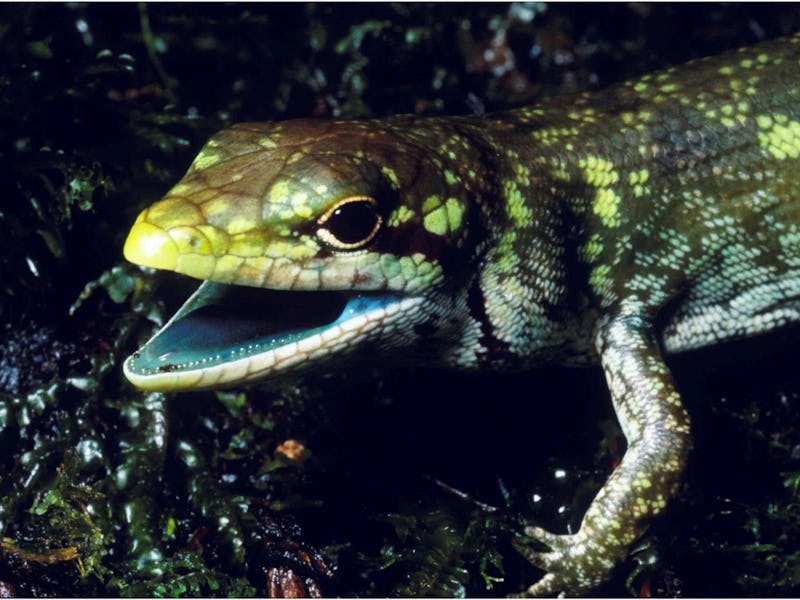Acid-Green Lizard Blood Gets its Hue From Lethal Levels of a Human Chemical
But scientists are hoping it can teach us how to treat human disease.

Prick your finger and you’ll see a spurt of scarlet. Puncture a member of the Prasinohaema, a genus of skinks, and you’ll get a flow of green blood instead. Because the compound that gives the blood its Nickelodeon-slime hue is highly toxic to humans, scientists have been perplexed about how these skinks manage to survive, let alone thrive. But in a new Science Advances study, a team of biologists reveal that they’ve uncovered the evolutionary history of the skinks’ green blood, which may offer some clues into how we can use it too.
In a study published Wednesday, scientists explain that the lizards’ blood — as well as their muscles, bones, and tongues — are bright green because they contain high levels of biliverdin. This green bile pigment is produced in the process of breaking down the oxygen-transporting molecule hemoglobin into the bile pigment bilirubin. In humans, it’s only found at very low levels. At its most low key, biliverdin is responsible for the green color in human bruises; when it’s found in excess, it can cause jaundice. These lizards, meanwhile, are squirming around with biliverdin levels 40 times higher than the lethal concentration that would knock out a human.
On the large, mega-diverse island of New Guinea, the scientists examined 51 species of skinks, six of which were Prasinohaema, discovering that they had all evolved the ability to resist biliverdin’s toxicity.
“In addition to having the highest concentration of biliverdin recorded for any animal, these lizards have somehow evolved a resistance to bile pigment toxicity,” lead author Zachary Rodriguez, a doctoral candidate in Austin’s lab at Louisiana State University, explained in a statement released Wednesday. “Understanding the underlying physiological changes that have allowed these lizards to remain jaundice-free may translate to non-traditional approaches to specific health problems.”
In this tube of lizard blood, green blood plasma is on the left.
DNA analysis of all the lizard blood samples revealed that there are four separate lineages of green-blooded lizards, each of which likely share the same red-blooded ancestor. The fact that green blood emerged independently four times in separate lineages suggests that it must have had an adaptive value, but the team isn’t quite sure what that value is yet. They hypothesize that the green bile pigment may “act as an antioxidant scavenging free radicals as well as preventing disease during in vitro fertilization.”
Previous experiments have demonstrated that moderately elevated levels of bilirubin — biliverdin’s yellow cousin — can help protect humans from malaria infection. The team is hoping that by continuing to study the elevated biliverdin levels in the lizards they can better understand the benefits of having green blood in the first place — and whether there’s anything humans can learn from it.